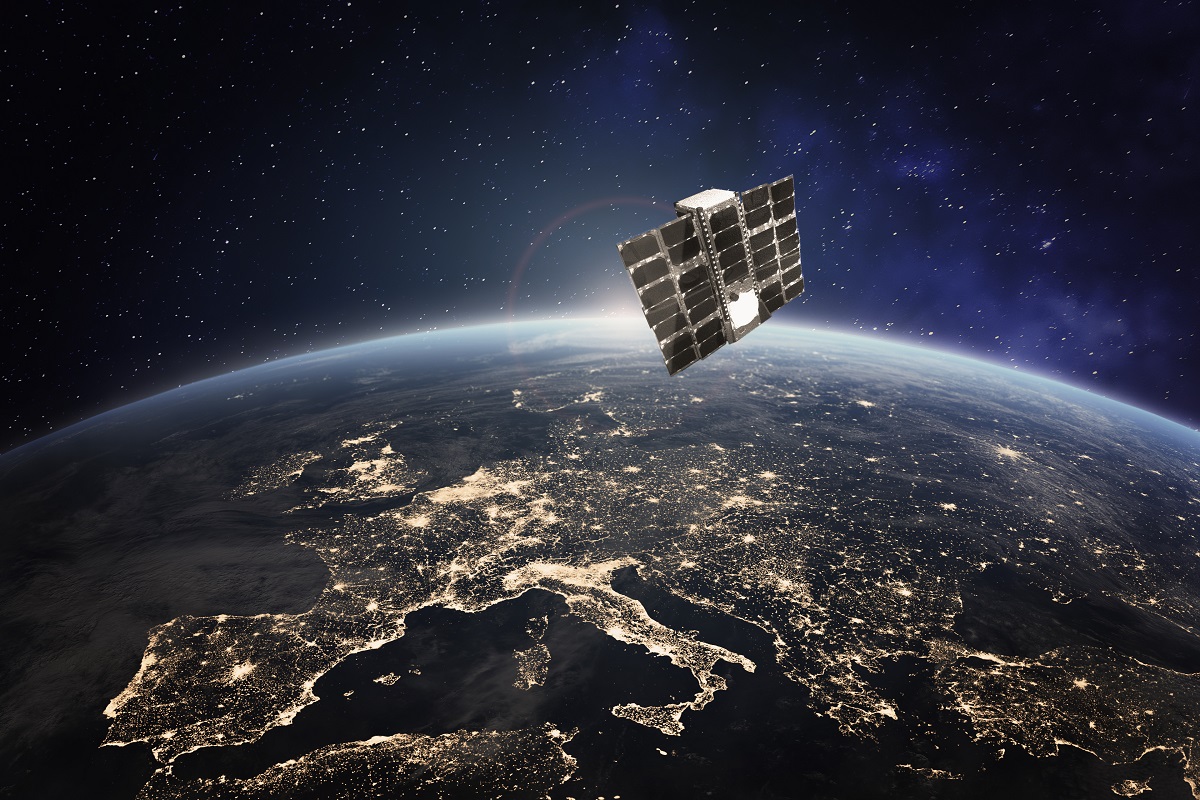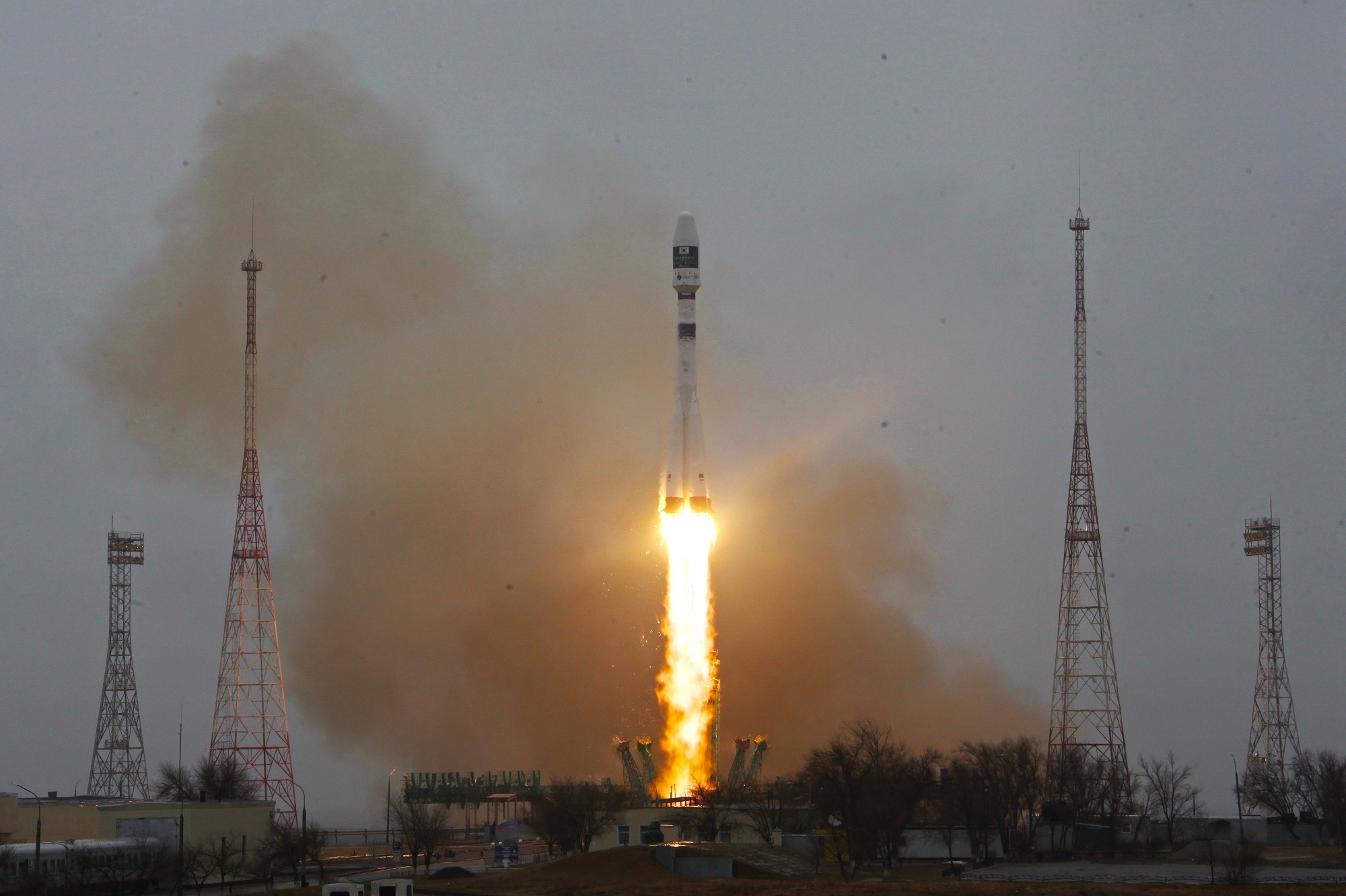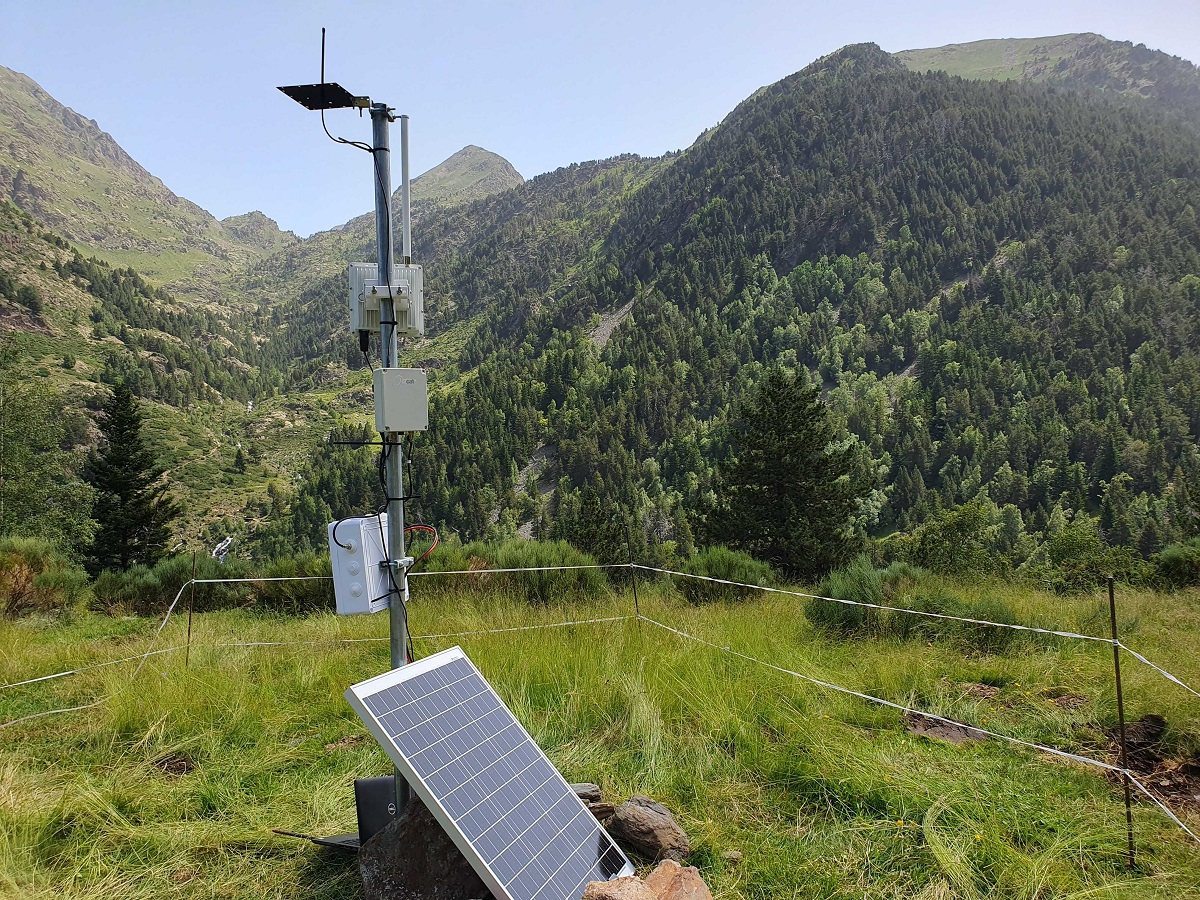Enxaneta completes its mission and re-entry into the atmosphere successfully and sustainably
- The nanosatellite provided by the first satellite mission promoted by the Government of Catalonia as part of the NewSpace Strategy has re-entered the atmosphere in accordance with ESA’s space debris mitigation guidelines
- During its three years in orbit, Enxaneta has validated the viability of IoT satellite connectivity to cover gaps in coverage through use cases in areas such as agriculture, livestock and climate
- It has also had an impact on the innovation ecosystem, demonstrating the maturity of communications technology based on non-terrestrial networks and generating knowledge about the conditions for deploying and operating a low Earth orbit constellation

Caption: Enxaneta is the first satellite mission promoted by the Government of Catalonia in the framework of the NewSpace Strategy.
Credits: Sateliot.
A little more than three years after its launch into orbit, Enxaneta, the nanosatellite provided by the first satellite mission promoted by the Government of Catalonia in the framework of the NewSpace Strategy of Catalonia, has completed the de-orbit phase and disintegrated on contact with the upper layers of the Earth’s atmosphere. The mission, contracted and supervised by the Institute of Space Studies of Catalonia (IEEC — Institut d’Estudis Espacials de Catalunya) and awarded to the company Sateliot, has been successfully and sustainably completed.
“Enxaneta has opened up a universe of opportunities for the Catalan technological ecosystem, giving meaning to the Government’s commitment to promoting this new emerging field that is NewSpace, where space and digital technologies converge,” says the Catalan Minister of Business and Work, Roger Torrent i Ramió. “It has made it possible to validate the viability of satellite connectivity, boost the research and innovation ecosystem, and develop use cases that respond to current challenges and have an impact on key sectors, and therefore on people’s lives and on the generation of employment and talent,” adds the minister, who stresses that “it has also completed its mission in a sustainable manner, fully aligned with European recommendations for the mitigation of space debris.”
Objective achieved from space
Enxaneta is the name with which the children of the Super3 Club ‘baptised’ the nanosatellite developed by the Catalan company Sateliot to provide services for the first mission of the NewSpace Strategy, a name that quickly became popular, even among the technical teams, to designate it. It is a three-unit CubeSat weighing just over 4 kg that lifted off aboard a Soyuz launch rocket from the Baikonur space station (Kazakhstan) on 22 March 2021.
During its life in space, Enxaneta has successfully achieved the main objective of the mission: to deploy global Internet of Things (IoT) connectivity services to enable communication and data collection from sensors located throughout the Catalan territory, especially in areas that are not covered by conventional terrestrial telecommunications networks.
According to the director of the Area for the Promotion of the Space Sector of Catalonia (APEC) of the IEEC, Josep Colomé Ferrer, “as an institution involved in the development of satellite infrastructure, the management of the Enxaneta mission by the IEEC has been a first step for the revitalisation of a strategic sector, through public-private collaboration between the research and innovation ecosystem and industry.”
Thus, through different coordinated use cases developed in collaboration with the i2CAT Foundation in areas such as climate, livestock or agriculture, Enxaneta has demonstrated the feasibility of providing satellite connectivity services to meet the needs of public administration and private industrial sectors.
In this sense, the director of i2CAT, Dr Sergi Figuerola Fernàndez, highlights that “Enxaneta has achieved its objectives and this is great news. As a Catalan research centre, we are proud to have been part of this first mission and to be an active part of this new space economy that not only boosts the country’s technological sovereignty, but also helps to reduce the digital divide in the territory.”

Caption: Enxaneta’s liftoff took place aboard a Soyuz 2 rocket on 22 March 2021.
Credits: GK Launch Services.
At the same time, the company Sateliot, operator of the nanosatellite, has been able to provide this service in other territories around the world given the global reach of satellite-based orbital infrastructures.
Enxaneta has also enabled the Catalan technological innovation ecosystem to understand the conditions for deploying and operating a constellation in low Earth orbit (LEO) and to contribute to the new 3GPP (5G IoT) protocol for communications with non-terrestrial networks (NTN).
“The management of the Enxaneta mission by the IEEC has been a first step for the revitalisation of a strategic sector, through public-private collaboration between the research and innovation ecosystem and industry,” explains Josep Colomé.
This has demonstrated the maturity of a communications technology designed and developed by Sateliot in a set of protocols compliant with the 3GPP Release 17 NTN-IoT standard, which has also been endorsed and certified by the European Space Agency (ESA). This technology is a revolution for the IoT industry, as it allows operators to connect to the satellite network via a roaming service when they need 5G coverage to provide connectivity.
This technology, which has been developed in Catalonia thanks to the strong innovation in this sector and the collaboration between industry and research and technology centres, has burst onto the telecommunications industry and is generating a new market with exponential growth.
For the co-founder and CEO of Sateliot, Jaume Sanpera Izoard, “Enxaneta has demonstrated throughout its useful life that our technology under the 5G standard works correctly, allowing on the one hand the success of the different use cases that were raised in this mission and, on the other hand, establishing technological leadership in satellite IoT connectivity that we are currently deploying in our satellite constellation.”
Use cases with continuity as public innovation contracts
The pilots with Enxaneta data have made it possible, on the one hand, to validate the technologies used in the communication between terrestrial sensors and the satellite, and on the other, to show how the proposed solutions can contribute to the digitalisation of rural areas and the development of new economic activities. In addition, the demonstration provided by Enxaneta has served to establish the basis for public innovation contracts.
1. Measurement of physical and environmental soil parameters in vineyard crops. The first Enxaneta use case was developed in Pallars Jussà with the aim of monitoring the state of the soil in vineyard crops to support farmers or for environmental studies on climate change and hydrological studies. In this case, satellite connection devices designed, deployed and operated by i2CAT—which also contributed, together with Sateliot, in the implementation of the communication protocols between sensors and nanosatellite—allowed the sending to Enxaneta of data from the IoT sensors of the Cartographic and Geological Institute of Catalonia (ICGC) located in vineyard cultivation lands located at high altitudes of complicated orography with little or no terrestrial network coverage.
2. Sensorisation of crops to optimise water consumption. The pilot project for monitoring the state of the soil of crops with the aim of being able to modify irrigation parameters to optimise water consumption was developed at the facilities of the Mas Badia centre of the Institute of Agri-Food Research and Technology (IRTA), located in La Tallada d’Empordà. In this case, the Lleida-based company SAFSampling, dedicated to IoT crop sensing systems, provided its irrigation water management system, which i2CAT adapted to integrate it with a smart antenna that sent the data to the satellite.
3. Location and daily monitoring of the livestock grazing area. This pilot project, aimed at monitoring livestock grazing in high mountains in order to improve management, identify preferred grazing areas and detect possible conflicting interactions, was carried out in collaboration with the Fauna and Flora Service of the Government of Catalonia in Llavorsí. In this case, i2CAT defined the sensorisation and data collection needs and sought the collaboration of a company that provided IoT-based livestock tracking systems. Digitanimal was chosen, which provided a set of collars where i2CAT integrated the new satellite architecture to transmit the data to low orbit satellites such as Enxaneta. This enabled daily and uninterrupted monitoring of herd and individual cattle movement patterns in an environment where, due to topographical complexity, terrestrial deployments are not the best option.

Caption: Equipment deployed in the Pyrenees for the location and daily monitoring of the livestock grazing area.
Credits: i2CAT.
Both the crop sensorisation pilot test and the monitoring of grazing livestock are currently being continued as contracts of the RIS3CAT 2030 Public Procurement of Innovation Programme funded by the Government of Catalonia and the ERDF Programme of Catalonia 2021-2027.
Re-entry in line with the European space debris mitigation charter
After three years in orbit, Enxaneta began the end-of-mission and re-entry (de-orbit) phase in mid-April, in which it has been losing altitude until re-entering the Earth’s atmosphere and disintegrating completely.
One of the great current and future challenges in space is the mitigation of space debris, and international organisations and small companies in the sector are working to reduce the impact of this debris, which can cause collisions of small fragments with satellites and manned spacecraft and obstruction of the sky visible for astronomical observations, among other things.
For this reason, and as responsible for the de-orbit of the Enxaneta, the company Sateliot, in collaboration with the technical team of the IEEC, has taken steps to perform a controlled and faster re-entry of the satellite, in accordance with ESA guidelines on space debris mitigation established in the Zero Debris Charter and the Space Debris Mitigation Requirements. The IEEC, as a signatory to the European Charter, is officially committed to follow the space debris mitigation recommendations and promote space debris mitigation standards and technologies to make the clean and sustainable use of space a reality.
About the NewSpace Strategy of Catalonia
Promoted by the Government of Catalonia through the Secretariat for Digital Policies of the Department of Business and Work and with the participation of the Institute of Space Studies of Catalonia (IEEC), the i2CAT Foundation and the Cartographic and Geological Institute of Catalonia (ICGC), the NewSpace Strategy of Catalonia is designed to take advantage of and maximise the opportunities of this new economic area based on the use of small satellites orbiting at low altitude and the exploitation of their data.
Thus, the strategy promotes a series of specific actions, such as satellite missions, with the aim of evaluating the adoption of NewSpace technology in the services of the Government of Catalonia and acting as a driver for its development in the different productive sectors and, at the same time, placing the Catalan space ecosystem on the international game board linked to this new emerging field and promoting the generation, attraction and retention of talent in Catalonia.
Contacts
IEEC Communication Office
Castelldefels, Barcelona
E-mail: comunicacio@ieec.cat
About the IEEC
The Institute of Space Studies of Catalonia (IEEC — Institut d’Estudis Espacials de Catalunya) promotes and coordinates space research and technology development in Catalonia for the benefit of society. IEEC fosters collaborations both locally and worldwide and is an efficient agent of knowledge, innovation and technology transfer. As a result of more than 25 years of high-quality research, done in collaboration with major international organisations, IEEC ranks among the best international research centres, focusing on areas such as: astrophysics, cosmology, planetary science, and Earth Observation. IEEC’s engineering division develops instrumentation for ground- and space-based projects, and has extensive experience in working with private or public organisations from the aerospace and other innovation sectors.
The IEEC is a non-profit public sector foundation that was established in February 1996. It has a Board of Trustees composed of the Generalitat de Catalunya, Universitat de Barcelona (UB), Universitat Autònoma de Barcelona (UAB), Universitat Politècnica de Catalunya · BarcelonaTech (UPC), and the Spanish Research Council (CSIC). The IEEC is also a CERCA centre.
